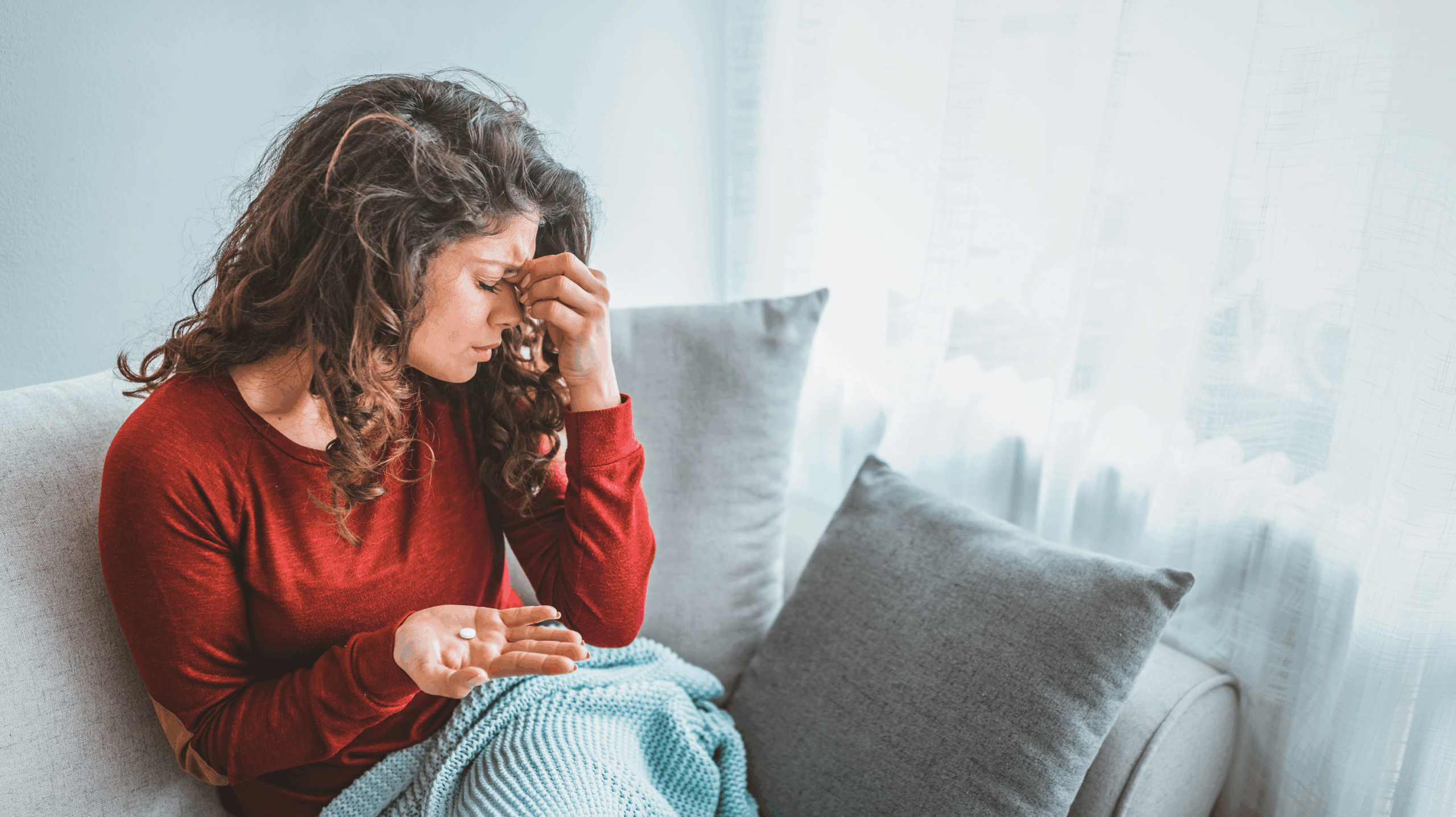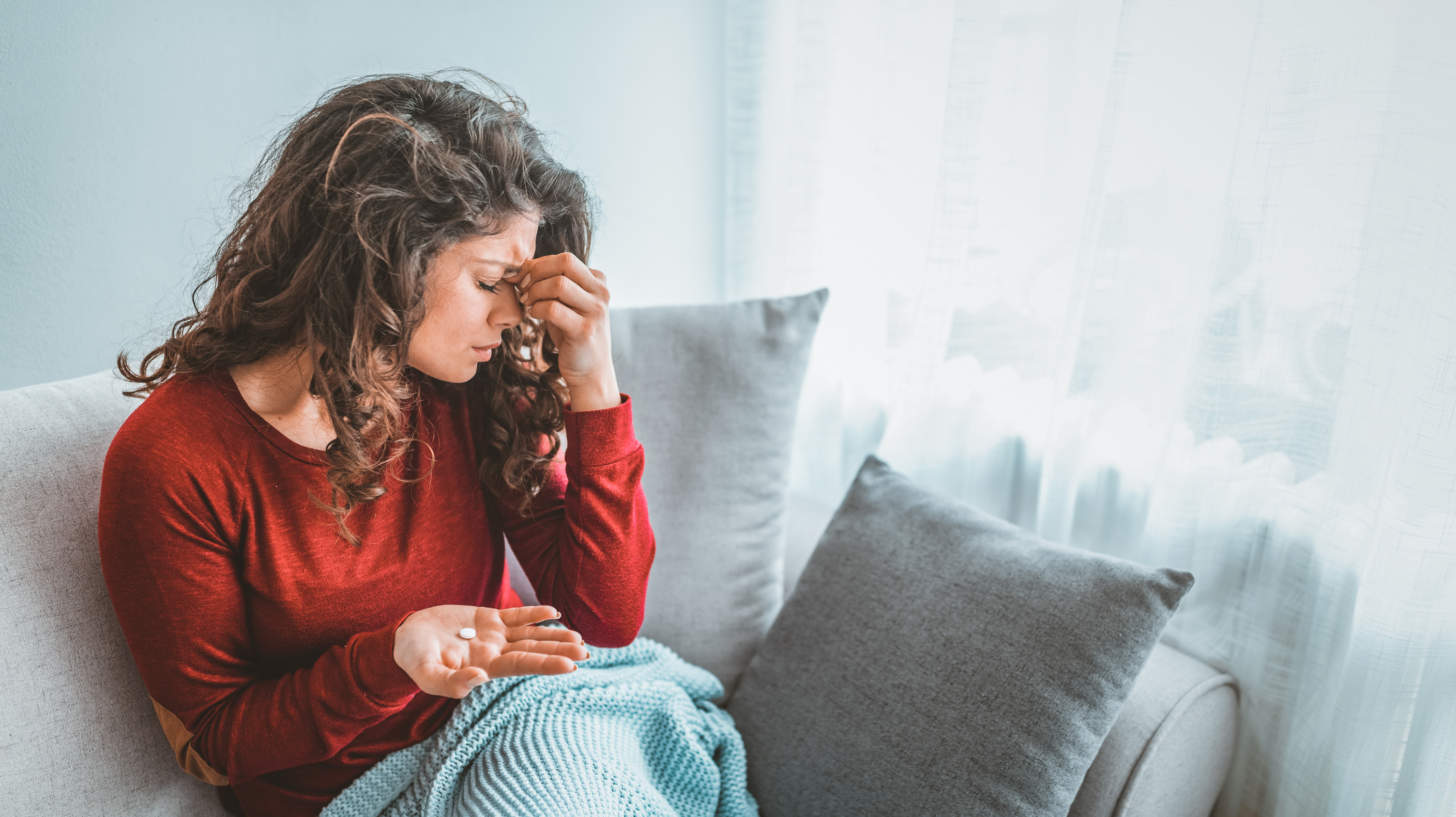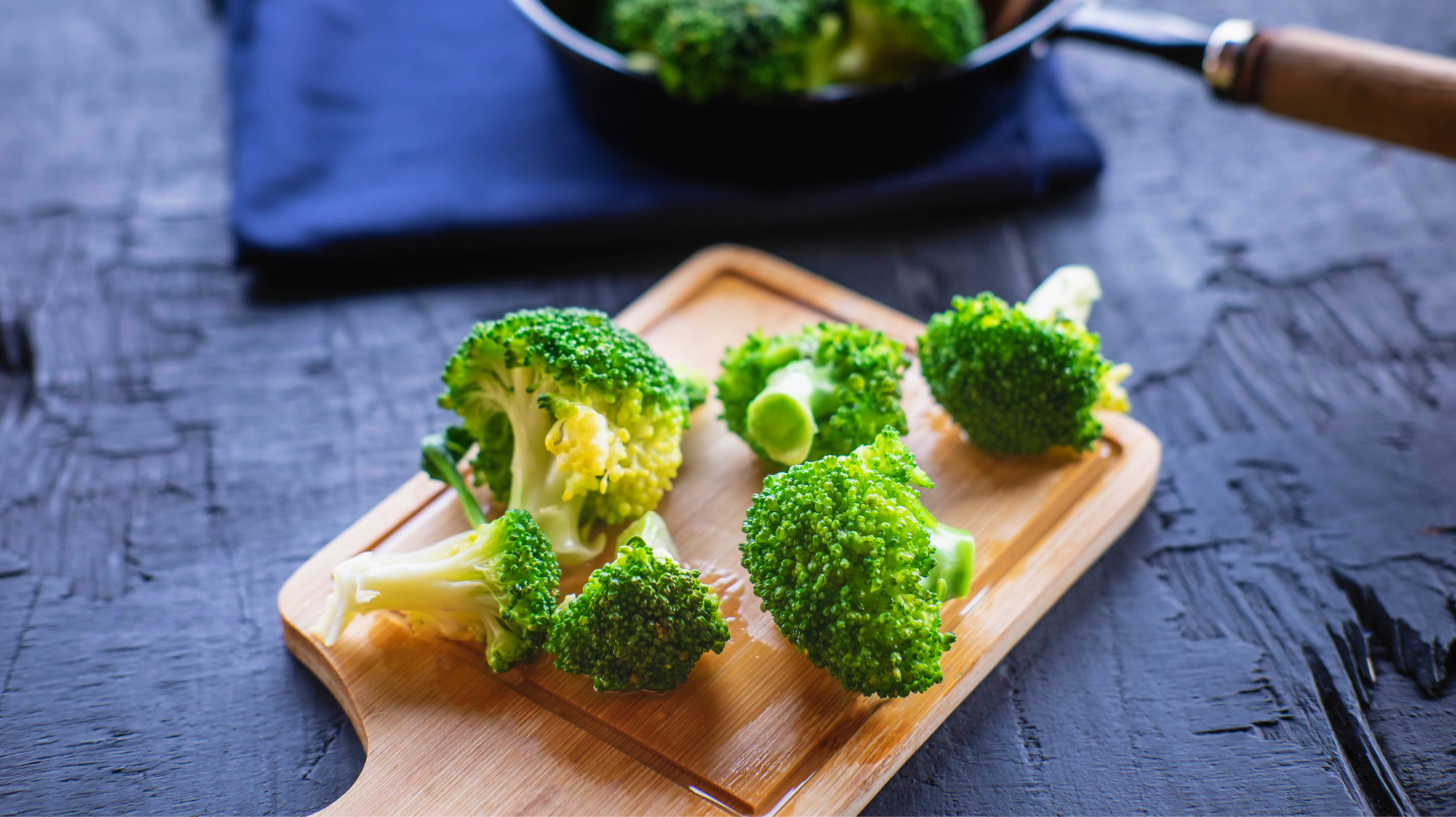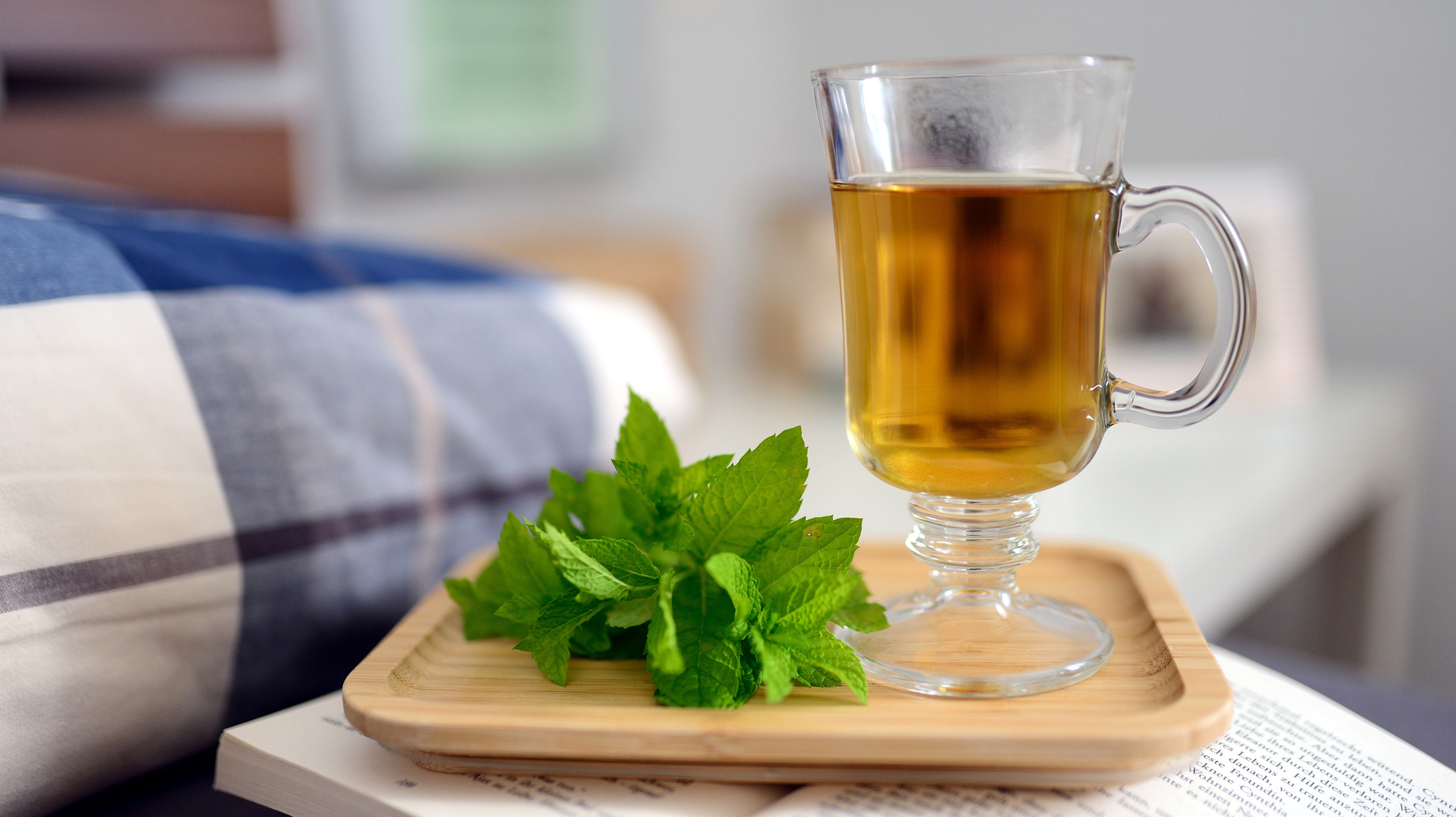
Perimenopause and Headaches – What’s The Deal & How To Rid The Migraines
Unfortunately, perimenopause and headaches can go hand in hand. Even before perimenopause, migraines affect approximately 1 in 7 people, and they are – surprise, surprise! – three times more common in women than in our male counterparts.
But don’t panic. If you’re suffering from headaches in perimenopause, there are strategies you can put in place.
Let’s take a look at the tie between perimenopause and headaches. Why do they happen at this transitional period? What triggers them? And, most importantly, what can you do about headaches in perimenopause?
Here’s everything you need to know.
What is perimenopause?
Let’s revisit the basics before we dive into perimenopause and headaches.
What exactly is perimenopause?
Put simply, perimenopause is a transitional period that women enter prior to reaching official menopause.
You may associate all the symptoms – hot flashes, brain fog and more – with menopause. However, they are experienced more in perimenopause. Menopause is just one day of your life.
Perimenopause is when you’re experiencing all of these symptoms while still having some form of period. Even if those periods are irregular, lighter or more spaced out. If you’re having any vaginal bleeding – including light spotting – you’re not yet menopausal and you are, instead, perimenopausal.
Perimenopause vs menopause
So, what’s the difference between perimenopause and menopause? It all hinges on your menstrual cycle.
Until you have had no bleeding at all for 12 consecutive months, you are perimenopausal.
However, when you haven’t had any vaginal bleeding for an entire year, you reach menopause itself.
Common symptoms of perimenopause
While we’re looking at perimenopause and headaches in this article, there are a plethora of other symptoms you may experience at this stage of life.
That said, it’s important to remember that every woman is different and so, too, will be their experience of perimenopause and menopause. Some women get lucky and suffer from very few symptoms. On the other hand, others may live through almost all the symptoms.
To pinpoint whether you’re in perimenopause or not, assess the list. Some of these symptoms are the first signs of perimenopause.
Common symptoms of perimenopause include:
- Headaches and migraines (of course)
- Hot flashes and night sweats
- Changes to your menstrual cycle
- Vaginal dryness and itchy vulva
- Bloating and tummy ache
- Perimenopause fatigue
- Mood swings, anxiety and depression
- Decreased sex drive
- Sleep disruption
What’s the link between perimenopause and headaches?
So, let’s take a look at the link between perimenopause and headaches. Why does perimenopause trigger so many headaches?
During perimenopause, your hormones are all over the place – specifically oestrogen and progesterone.
When your oestrogen and progesterone levels fluctuate, it can trigger a heap of symptoms, including migraines.
On top of this, your hormonal changes can interfere with sleep. This fatigue can cause headaches. Not to mention increased levels of stress and anxiety, which – when combined with a lack of sleep – can trigger migraines.
You’re working against a whole bunch of factors, often resulting in strong ties between perimenopause and headaches.

Periods, perimenopause and headaches
Remember, you will still experience periods – even if they’re different to what you’re used to – during perimenopause. So, it’s worth looking at the tie between periods, perimenopause and headaches.
When you’re on your period, your oestrogen levels drop, just like they do during perimenopause. That’s why it’s so common to experience migraines right before or during their periods.
Combine the already dwindling oestrogen levels that comes with perimenopause with a further drop due to your period, and it makes complete sense why you’re having migraines.
What can trigger migraines in perimenopause?
When it comes to perimenopause and headaches, it’s all about discovering the triggers. Usually, migraines in perimenopause are rooted in hormone changes.
Let’s take a look at what else can trigger migraines in perimenopause:
- Hormone fluctuations As mentioned previously, your oestrogen and progesterone levels are changing in perimenopause. This can lead to headaches.
- Changes to your menstrual cycle As your periods change throughout perimenopause, hormonal shifts can cause headaches.
- Having to deal with perimenopause symptoms It’s no shocker that we tend to experience headaches when we’re already feeling a little on the rough side. In perimenopause, you’re having to handle a lack of sleep and fatigue, mood swings and stress, which can trigger migraines or worsen existing ones.
- Dehydration While this isn’t exclusive to perimenopause and headaches, dehydration is a common culprit when it comes to migraines.
What to do about perimenopause and headaches
Based on the triggers that tie perimenopause and headaches together, it’s no wonder why migraines are extremely common during this transitional period.
So, now that we understand what could be causing your headaches, let’s dive into what you can do about them.
1. Eat foods that help with headaches
As with any symptom of perimenopause, there’s certain foods that will help with your symptoms. For example, if you’re suffering with hot flashes, there’s a bunch of foods that’ll help. The same goes for foods to tackle skin issues in perimenopause.
When it comes to foods that help with perimenopause and headaches, here’s your go-to list:
Bananas to help boost your energy
There’s a reason I always recommend bananas as a snack for menopausal women in the workplace! If your headache has been triggered by low energy levels and fatigue (which is a super common symptom of perimenopause), bananas are a god-send.
Bananas restore energy quickly and the high quantities of magnesium can often help with a headache. Not to mention, they’re packed with water, so they’ll help reduce migraines caused by dehydration.
My advice? Start your day with a Banana Berry Smoothie. Delicious, nutritious and hydrating – the perfect way to starve off a migraine before it begins.
Watermelon for hydration and preventing headaches
The clue is in the name – watermelon is so full of water. 92% of it, in fact, is water.
Dehydration is such a common trigger for migraines. When you combine the hormonal fluctuations of perimenopause and headaches with a lack of hydration, it’s no wonder why migraines are so common.
However, making sure you get enough fluids can work wonders. If you’re forgetful when it comes to drinking water, make sure you eat foods that are high in water content. Watermelon is an excellent choice.
Not to mention, watermelon is also great for hot flashes.
PS: On a hot day, there is nothing better than water melon that has been popped in the freezer for an hour. And, if you cut it up into little rectangles and pop a stick into it, you can sell the sweet treat as an ice lolly for the kids.

Berries help to relieve pressure on your sinuses
Berries feature in almost all of my nutrition-based articles because they are, simply put, one of the best foods for perimenopause.
When it comes to perimenopause and headaches, berries are mini superheroes.
Berries – blackberries, strawberries, blueberries and raspberries – contain a heap of antioxidants. These, when consumed, can help take pressure off of your sinuses, helping to reduce migraines.
Not to mention, berries also contain a heap of anthocyanins and flavanoids, which may be anti-inflammatory and are full of antioxidants.
Yoghurt will tackle dehydration and improve gut health
There’s a strong link between migraines and gastrointestinal issues, specifically constipation.
No one wants a pounding headache and to be bunged up at once. It’s uncomfortable and painful.
To tackle both of these issues, try plain yoghurt. A probiotic food, yoghurt improves overall gut health and is super hydrating, reducing the likelihood of experiencing a headache.
Broccoli will help to balance your hormones as they drop
Broccoli is a type of cruciferous vegetable, which are highly nutritious at any point of life. That said, they’re even better for you during perimenopause and menopause.
Cruciferous vegetables, like broccoli, Brussels sprouts and bok choy, contain phytoestrogens, which mirror natural oestrogen in the body. However, not in sky high amounts. When it comes to hormonal balance in these types of vegetables, it’s all down to something scientific called indole-3-carbinol and sulforphane. Together, these nifty compounds support oestrogen, metabolism and detoxification.
In turn, this makes your symptoms less severe, including your experience of perimenopause and headaches. A study in 2012 suggests that there’s a link between fewer headaches when consuming more cruciferous vegetables due to the nutritional gems waiting for you inside them.
Think of them as hormone balancing foods.

2. Protect your sleep and try to make sure you’re well rested
Sleep is crucial when you’re going through perimenopause. Unfortunately, sleep disruption and fatigue are all too common in this stage of life. This is often due to your fluctuation in hormone levels, but there are other factors at play, too.
Changes in your life, stress, trying to deal with other symptoms at the same time plus your changing hormones all make a cocktail of sleep deprivation.
Unfortunately, this can then trigger headaches.
It’s for this reason why prioritising your sleep is so important. Here are a few ways to encourage a healthy 40 winks:
- Stick to a regular sleep schedule
You should go to sleep and wake up at the same time every day, even on weekends. This helps to train your body into a natural sleep-wake cycle. Even if you can’t fall asleep at the same time, make sure you’re resting in bed (without a screen in front of you!) - Create a consistent bedtime routine
You want to go to bed relaxed, stress-free and calm. So, make sure you create a bedtime routine that leaves you feeling tranquil before getting into bed. Whether that’s via having a bubble bath, reading, or meditating, making sure you’re in a calm state of mind is crucial for a good night’s sleep. You should, too, stick to this routine for maximum impact. - Create a sleeping environment that encourages sleep
Don’t underestimate the importance of your environment when it comes to sleep! You’ll want to make sure your room is as dark as possible. On top of this, try to limit noise and keep your room as cool as you can. Many perimenopausal women sleep with a fan on to tackle night sweats, and they ditch the duvet for lighter, layered blankets.
3. Exercise more regularly
Not only does exercise aid with meno weight loss, it can also help with perimenopause and headaches. But how? Why?
Exercise helps with perimenopause headaches because:
Exercise encourages better hormonal balance
Believe it or not, exercise can actually regulate your oestrogen and progesterone levels. Seeing as oestrogen and progesterone are all over the place during perimenopause, balancing them through some physical activity can lessen your frequency and severity of headaches.
Plus, many people find that exercise helps with stress levels, which can also trigger headaches. So, it’s a win-win!
Exercise improves your sleep quality (so long as you don’t leave it too late at night)
When you exercise regularly, you’ll see an improvement in sleep quality. Fatigue can be a common trigger for perimenopause and headaches, so sleep quality is crucial.
That said, it’s really important not to exercise too closely to bedtime. Instead, try to finish your exercise and wind down at least 2 hours before hitting the hay.
Exercise is a natural pain relief
If you’re already experiencing a migraine, the last thing you want to do is exercise. I get it. However, exercise is a natural painkiller due to the release of endorphins. It’s a tricky one – to find the motivation to get moving when you’re mid-headache – but if you can push yourself to do exercise, you’ll likely feel much better.
4. Focus on stress management as best as you can
Stress management can truly help with perimenopause and headaches – though many people underestimate the impact.
When you’re stressed, you may notice that your perimenopause symptoms worsen. You may encounter more hot flashes and night sweats than normal. Your mood swings may feel more drastic. The cortisol levels, when mixed with falling oestrogen levels, can interact and cause migraines.
Managing stress isn’t an easy thing to do. It takes practice, self-awareness and understanding, and this doesn’t happen over night. That said, when you do discover a way to manage your stress levels, you may be able to improve most of your perimenopause symptoms.
Every woman is different, and your way of managing stress may be totally different to someone else. It’s all about knowing what works for you. To get started, though, here are some common stress management techniques:
Exercise
Routine exercise releases endorphins and reduces stress levels. The endorphins are feel-good hormones, so get stuck in to some physical activity. Whether that’s swimming, walking, strength training, or a little jog around the block.
Breathing techniques
Deep breathing techniques will calm down your nervous system. They’re also great for preventing panic attacks (which are common in perimenopause). If you’re new to breathing exercises, take a look at some guided breathing videos on Youtube. These often come with guided meditation exercises, like this one:
Meditate
Meditation allows you to feel present and grounded, allowing you to reduce stress levels and, as a result, get rid of perimenopause headaches.
Do yoga
Yoga is excellent in perimenopause and, specifically, for stress reduction. It combines physical exercise with holistic healing practices, such as meditation and breathing techniques.
Speak out to someone you trust
Perimenopause and menopause can be a lonely time. While things are getting better, menopause and perimenopause are still on the taboo side of talking topics. This leads to feeling shame surrounding your symptoms. In fact, these transitional periods are some of the most important times to speak out and confide in those you trust.
Simply getting things off your chest will make the world of difference, reducing stress levels and, thus, headaches. Not to mention, sharing how you feel will help your loved ones understand how to support you better.
5. Reduce your alcohol consumption
It’s not exactly breaking news when we say that alcohol is bad for you. We all know that. But when it comes to perimenopause and headaches – alcohol is even worse for you.
The impact of alcohol on perimenopause and headaches
If you consume alcohol during perimenopause, when your hormones are fluctuating, the way the alcohol is processed in the body can lead to headaches.
Lowering oestrogen levels, liver damage and metabolism
As your oestrogen levels lower, you’re already more vulnerable to migraines. Add alcohol to the party and it becomes even more intense. This is because alcohol is a vasodilator – a substance that dilates your blood vessels – causing headaches.
It’s not just about your blood vessels, though. Your liver plays a role, too. Your liver’s ability to process booze worsens with age. When perimenopause hits, it receives a double whammy. As a result, you’re left with a slower alcohol metabolism. This can lead to worsened symptoms, including that of perimenopause and headaches.
Alcohol, dehydration and your bladder in perimenopause
When it comes to perimenopause, menopause and incontinence, alcohol will make everything worse. Believe it or not, this also has an impact on headaches.
Alcohol is a diuretic, meaning you’ll need to pee more frequently when you consume alcohol. If you’re already struggling with increased need to urinate, booze will drastically increase this. As such, you can become dehydrated which – as we know – is a leading trigger when it comes to perimenopause and headaches.
Alcohol and sleep disruption in perimenopause
Finally, alcohol can increase the frequency and severity of headaches because of sleep disruption. It’s a known fact that alcohol can disrupt our sleep patterns, leading to poor sleep quality and overall fatigue. In time, it can cause a huge barrier to natural sleeping cycles, which – in extreme cases – can cause insomnia.
A lack of sleep, just like stress, can become one of the most common headache triggers for you.
As a Menopause Nutritionist, I don’t believe in the “all or nothing” approach. If you’re happy to cut out alcohol entirely, then fantastic. You’ll absolutely feel the benefit.
However, I do know that certain social events and lifestyles make quitting booze entirely more difficult. If you can start simply by cutting down, you’ll be more likely to stick with it.
6. Reduce your caffeine consumption
Just like alcohol, caffeine can be a main culprit when it comes to perimenopause and headaches. While many people don’t know just how big of an impact caffeine has on perimenopause symptoms in general, it can exacerbate almost every single one of them.
When you consume caffeine, you may trigger or worsen headaches because of how caffeine interferes with blood pressure, sleep and magnesium levels.
Your blood pressure is more likely to fluctuate at this time of your life. So, when you add a substance that causes mayhem – encouraging spikes and crashes in blood pressure – your chances of receiving a headache in return are much higher. Headaches are caused by fluctuations in blood pressure because of the spasms created in small blood vessels in your head.
Not to mention sleep disruption! Many of us lean on a cup of coffee to wake us up in the morning or towards the end of a long working day. However, if you’re struggling with fatigue and insomnia, caffeine will do you no favours. In fact, it’ll make everything worse. Poor sleep is a leading trigger for migraines in perimenopause.
When it comes to magnesium levels, caffeine has a horrible habit of lowering them. We need magnesium for a range of things – including muscle relaxation. A lack of magnesium can lead to tense muscles and joint pain, which can contribute to headaches.
If you consume a lot of caffeine, just be prepared for some withdrawal symptoms (really!). Stopping caffeine consumption suddenly can lead to headaches. Make sure, when you cut down, you drink lots of water in its place. If you’re craving a hot drink, herbal teas – specifically peppermint tea as it has properties that fight headaches – are a great substitute.

Perimenopause and headaches – when to see a doctor
Even though perimenopause and headaches can go hand in hand, it’s really important to keep your doctor in the loop.
If you’re unsure whether to see a healthcare professional about headaches, use this tick list.
You should see your doctor if…
✓ Your headaches are occurring regularly
✓ Your headaches are extremely painful
✓ These migraines are impacting daily life, making it difficult to work, sleep or enjoy day-to-day activities
✓ Even after taking pain relief, you are still in pain
✓ Along with your headaches, you’re also experiencing the following symptoms:
- Nausea
- Vomiting
- Sensitivity to light and noise
- Fever
- Rash
- Dizziness
- Confusion
Remember, you don’t have to deal with any perimenopause or menopause symptom alone. Your doctor will be able to guide you and should always be kept updated.
Perimenopause and headaches – in a nutshell
Among other symptoms, it’s super common to experience perimenopause and headaches at the same time. Often, this is down to the fluctuations in your hormone levels, though migraines can also be triggered by dehydration, stress, a lack of sleep and having to deal with all of your other symptoms.
Making sure you’re eating the right foods that combat headaches and protecting your sleep, ensuring you have enough rest are excellent places to start. Add in routine exercise, stress management and avoiding both alcohol and caffeine and you’ll see a huge difference in the frequency and severity of your headaches.
Remember to keep your doctor updated about any symptoms, including migraines in perimenopause. You should never have to deal with these symptoms alone, so allow a healthcare professional to help. This is especially true if your headaches are persistent, getting worse, or accompanied with other symptoms.
Leave a Reply
- free ebook alert -
WHAT TO EXPECT WHEN YOU’RE
going through the menopause
Demystify your understanding of what’s happening to you. Arm yourself with solid, game-changing information to support you through this challenging phase of your life.
grab your copy now →
WHAT TO EXPECT WHEN YOU’RE
going through the menopause
Dear ladies that are suffering despite trying numerous approaches. If you find yourself triggered by scents, are bloating and have developed food intolerance and regular migraines during perimenopause…look into histamine intolerance. Cutting out / reducing certain high histamine foods can be helpful. There is a close link between oestrogen levels and histamine levels.
Very insightful post on how hormonal changes during perimenopause can trigger frequent headaches. Alongside diet and lifestyle adjustments, it’s also interesting to see how new treatments like GLP-1 agonists may support women during this stage: https://www.shemed.co.uk/blog/perimenopause-and-glp-1-agonists”
This is such an informative post! Understanding perimenopause and its symptoms like headaches really helps women manage them better. Great tips! More useful reads here: https://www.shemed.co.uk/blog